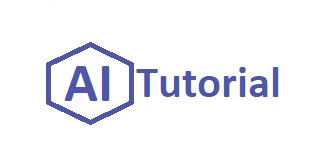🏋️ Model Training
Model training is the process where a machine learning algorithm learns patterns from data. Just like a student studies textbooks and solves problems to learn a subject, a machine learning model learns by analyzing a dataset and adjusting its internal parameters to make accurate predictions.
📌 Core Concepts in Model Training
📊 Dataset: Your dataset is the foundation. It usually consists of:- Input features (X): The independent variables or signals used to make predictions.
- Target labels (Y): The correct answers or outcomes the model is trying to predict.
- Example: Input: [Hours studied, Sleep hours] → Output: Exam Score
🧠 Model: A model is a mathematical structure (like a linear function, decision tree, or neural network) that maps inputs to outputs. Initially, this model is untrained and doesn’t know the correct relationships.
🧠 Model Training Process (Traditional ML vs Neural Networks)
⚙️ Training Without Neural Network (Traditional ML)
Step 1: 📁 Dataset
Input features (X) and target labels (Y) e.g., [Hours studied, Sleep hours] → Exam ScoreStep 2: 🧼 Data Preprocessing
Clean, normalize, and split data into training and testing sets.Step 3: ⚙️ Model Initialization
Initialize model (e.g., coefficients for linear models or tree nodes).Step 4: 📊 Model Training
Learn patterns using algorithms like SVM, Decision Trees, k-NN.Step 5: 🔮 Prediction
Model predicts output based on unseen test inputs.Step 6: 📈 Evaluation
Measure performance using metrics like accuracy, precision, recall.🤖 Training With Neural Networks
Step 1: 📁 Data Preprocessing
Normalize features, encode labels, and split into train/val/test.Step 2: 🧠 Network Initialization
Randomly initialize weights and biases for all layers.Step 3: ➡️ Forward Propagation
Input flows through the network and outputs are calculated using activation functions.Step 4: 🎯 Loss Calculation
Compare predicted vs actual output using loss function (MSE, Cross-Entropy).Step 5: 🔁 Backpropagation
Update weights via gradient descent to reduce loss.Step 6: 🔄 Epochs
Repeat forward + backward pass over many cycles (epochs).Step 7: 🧪 Validation
Monitor model on validation data to prevent overfitting and fine-tune.🤖 Traditional ML vs Neural Networks
| 🔍 Feature | 🧮 Traditional ML | 🧠 Neural Networks |
|---|---|---|
| 🏗️ Model Structure | Simple (e.g., lines, trees) | Complex, multi-layer networks |
| ⚙️ Training Method | Closed-form or simple optimization | Iterative gradient-based learning |
| 🛠️ Feature Engineering | Manual (important!) | Automatic via hidden layers |
| 🔋 Computation Needs | Low (lightweight) | High (requires GPUs) |
| 🔎 Interpretability | Easy to interpret | Often a “black box” |
